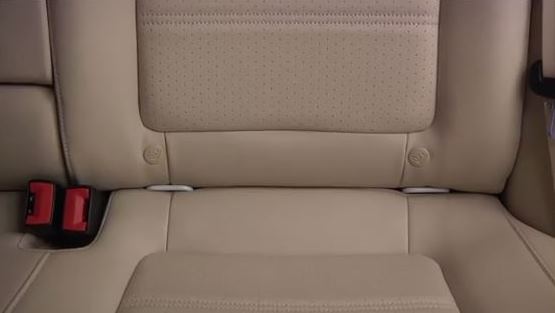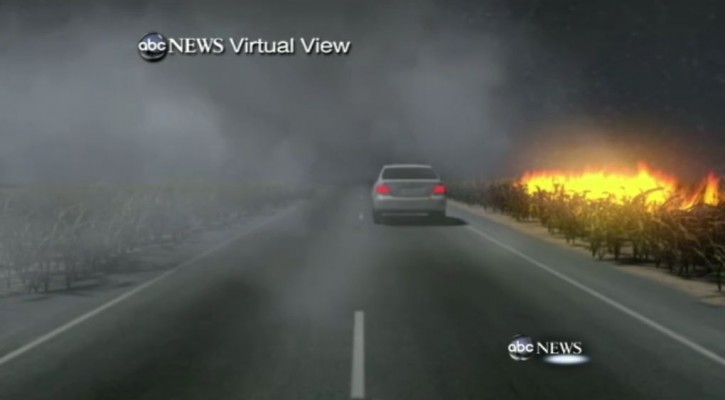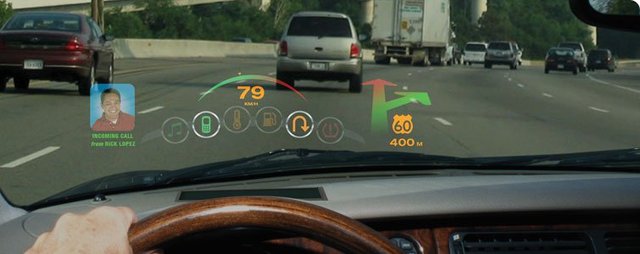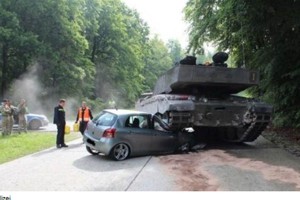
IIHS Rates Child Safety Seat LATCH Mechanisms
June 25, 2015
The Insurance Institute for Highway Safety (IIHS) has come out with a rating list of child safety seat LATCH mechanisms. LATCH (Lower Anchors and Tethers for Children) systems, which have been required equipment on passenger vehicles since 2002, are supposed to make it easier for parents and caregivers to safely install child safety seats. In this first review of LATCH system ease of use, few cars made the grade.
LATCH systems consist of anchor points low on the seat and tether points on the back of the seat. Research shows that child seats installed with LATCH, rather than with vehicle seat belts, are more likely to be installed correctly. Whether or not parents use LATCH correctly depends on the attachment point’s visibility and ease of access.
According to an American Academy of Pediatrics study in 2014, 93 percent of new parents taking their newborn home from the hospital for the first time made at least one critical error in placing or attaching their infant car seat. LATCH systems are supposed to make that process easier but, according to the IIHS, most cars LATCH systems are difficult to find or are difficult to reach making it more difficult to attach car seats.
In conducting their study, the IIHS looked at five different criteria for a vehicle to receive a “good” rating:
- The lower anchors are no more than 3/4 inch deep in the seat bight.
- The lower anchors are easy to maneuver around. This is defined as having a clearance angle greater than 54 degrees.
- The force required to attach a standardized tool to the lower anchors is less than 40 pounds. (The tool represents a lower connector of a child seat, though the actual force required when installing a seat varies depending on the specific connector.)
- Tether anchors are on the vehicle’s rear deck or on the top 85 percent of the seatback. They shouldn’t be at the very bottom of the seatback, under the seat, on the ceiling or on the floor.
- The area where the tether anchor is found doesn’t have any other hardware that could be confused for the tether anchor. If other hardware is present, then the tether anchor must have a clear label located within 3 inches of it.
According to the IIHS, out of 102 models tested, only three models received a good rating; they are:
- BMW 5 series
- Mercedes-Benz GL-Class
- Volkswagen Passat
Out of the rest of the models tested, 44 were acceptable, 45 were marginal, and 10 were rated poor.
To read more and to view all of the models and their LATCH ease of use ratings, visit: IIHS launches ease-of-use ratings of LATCH hardware in vehicles
For information on choosing and installing the right car seat for your child, visit: Parents Central

Conditions Are Right For Super Fog
June 16, 2015
Conditions are right for the formation of super fog in Florida right now and that could make driving treacherous for Floridians.
Despite some recent scattered thunderstorms, North Florida is currently experiencing drought conditions and is considered the driest area in the state. The few recent thunderstorms in the area have built up quickly and then rapidly disappeared however, the lightning created by these storms can strike areas far from the rainfall. Those lightning strikes are causing wildfires and it appears that North Florida may be entering a significant fire season. Already, multiple wildfires have popped up throughout the region.
It’s bad enough when the smoke from these fires crosses over roadways. Heavy smoke can make driving conditions extremely hazardous but, when the smoke mixes with fog, conditions can rapidly turn deadly.
As we all know from our basic science classes, warm air holds a lot more moisture and, when humidity levels near 100 percent, fog can form; especially in the cooler, early morning hours. If the fog mixes with smoke from a wildfire, the water droplets in the fog can coat the smoke particles turning it into what’s known as a super fog. Super fog is much more dense and doesn’t dissipate as quickly as a normal fog.
Super fog has been responsible for some of the largest multi-vehicle crashes in the country.
Super fog caused a multi-vehicle crash on I-75 near Gainesville in January 2013 that killed 10 people and injured more than 20 others. Rescuers couldn’t see the victims but, instead, had to listen for screams and moans to reach the injured.
In January 2008, a super fog on I-4 near Lakeland, FL was responsible for a pileup involving 70 vehicles that killed four people and injured 38 others.
If you encounter thick smoke, fog, or a combination of the two, slow down and get off the road. Turning on your hazard lights may not do any good because the fog can be so thick, your lights won’t be visible to other drivers until it’s too late. Crack your window to listen for crashes ahead and, if possible, get off at the nearest exit.
See more: World News: Deadly Pileup

Heads Up Displays, Helpful Or Harmful?
June 8, 2015
An article by Joel Feldman, the founder of End Distracted Driving points out the possible dangers of heads up displays that are being developed for automobiles. Heads up displays are supposed to offer the promise of less driver distraction because the driver can view dashboard information without taking his or her eyes off the road ahead. However, rather than making the driving environment safer, some safety experts fear that heads up displays will, instead, just add to the mass of distractions facing drivers today.
Heads up display technology or HUDs as they are commonly known, have been in the aviation industry for decades. Military aircraft commonly use HUDs as an aid in dogfights and on bombing runs. Where HUDs in military aircraft differ from the civilian use of HUDs in cars is that the military HUD is often helping the pilot to focus on and aim at a target that may not be in view of the pilot; military pilots don’t focus on the HUD at all times.
There’s an old saying in military aviation that to be safe, a pilot must first aviate, navigate, and then communicate. Basically, what that means is that the pilot has to concentrate first and foremost on flying the aircraft. All of the navigation and communication input can be distracting and make the pilot lose focus on the job of flying the aircraft.
The same is true for cars. While the HUD is supposed to allow the driver to keep his or her eyes on the road, all of the information beamed on the windshield can actually work to make the driver lose focus on the road ahead. The driver must first drive the car and that means looking at much more than just the road directly ahead.
Hazards can come at a driver from all directions and the driver must be constantly on the lookout for those hazards. Information such as incoming call or email notices, road directions, and a number of other bits of info that could be projected can act to distract the driver’s vision from further down the road or from the sides and rear of the car where hazards could be approaching.
Safety experts say that, despite the claims of the HUD manufacturers that the technology will make the driving environment safer, there are no studies to back up those claims. Until those studies are done, vehicle manufacturers should put the brakes on the introduction of heads up displays.
Read more: Heads-Up Displays are Not an Answer to Driver Distraction
Photo credit: Pico Projector-Info.com

Ask The Driving School Instructor: Failure To Yield
June 3, 2015
Question: What exactly does failure to yield mean and when does it apply?
Answer: Failure to yield can apply in several different situations but basically, if another driver has to swerve or slam on the brakes to avoid hitting you, you’re guilty of failure to yield. Let’s look at some different situations where failure to yield can come into play.
The 18 year old German girl driving the car in the photo below tried to turn onto a street that is heavily used by military vehicles at a nearby British army base. A military convoy was passing by when she tried to enter the road and, for some mysterious reason, probably involving the laws of physics, the driver of a 68 ton Challenger tank was unable to stop in time. The front half of her car was crushed under the tank. She was guilty of failure to yield.
 http://www.nbcnews.com/news/world/young-drivers-car-crushed-british-tank-augustdorf-germany-n368211
http://www.nbcnews.com/news/world/young-drivers-car-crushed-british-tank-augustdorf-germany-n368211
One mistake people make, especially where large vehicles are concerned, is judging their speed. Large vehicles like buses, trucks, and Challenger tanks appear to be going much slower than they actually are. This is especially true for trains. The passengers of the car in the video below were lucky that no one died when the speeding driver tried to beat a train at a railroad crossing. The car was cut in half and the rear seat passenger was thrown out of the vehicle.
A vehicle entering an interstate highway must yield to the traffic already on the main road. That means matching the speed of the traffic on the main part of the road and looking for an opening large enough that will allow you to enter safely. To do that, you should look for an opening of at least four seconds between vehicles so that there’s at least a two second distance between you and the car behind.
Remember that no one has the right of way. The law only determines who should give up the right of way in any given situation. If you aren’t sure whether you have room to enter traffic safely, wait!

Airbag Recall Expands To Include 34 Million Vehicles In US
May 21, 2015
The Takata airbag recall was expanded this week to include 34 million vehicles in the US. The announcement was made by Department of Transportation Secretary Anthony Foxx on May 19th.
Previously, Takata had refused to admit that a defect was present in its airbags but allowed that vehicles in areas with high humidity might experience problems. The initial recall of vehicles with Takata airbags installed, was limited to vehicles in Florida, the Gulf states and Hawaii. Now Takata has admitted that there is a defect with the inflators and specifically with the propellant used to inflate the airbags.
The propellants in the inflators use a chemical that can degrade over time. If moisture is introduced into the chemical, it can lead to “over-aggressive combustion” leading to higher internal pressures that can rupture the body of the inflator. The defective airbags are responsible for six deaths and more than 100 injuries.
The airbag recall covers driver side airbags in at least 17 million vehicles and passenger side airbags in an additional 17 million vehicles.
With the admission that there is a defect in the airbag inflators, the airbag recall will now include more vehicle manufacturers than previously thought. Vehicles now subject to the recall are made by the following manufacturers:
- Honda
- BMW
- Chrysler
- Ford
- Mazda
According to the National Highway Transportation Safety Administration (NHTSA), it will take vehicle manufacturers about a week to determine which of their vehicles are affected by the airbag recall order. Takata will create a plan to find and replace the affected vehicles as soon as possible with priority going to vehicles located in states with high humidity.
For vehicle owners who want more information about the airbag recall, NHTSA has created a “recalls spotlight” page on their SaferCar.gov website. Follow the link to VIN lookup.
The VIN is your vehicle’s identification number. The VIN can be found either on an inspection plate on the driver side door jamb or under the windshield on the driver’s side of the vehicle. The VIN can also be found on your auto insurance policy and your insurance ID card.
Vehicle owners affected by the airbag recall should expect to receive a letter in the mail from the manufacturer of your vehicle. The recall notice from your manufacturer will give details about how to comply with the recall. Owners who receive an airbag recall notice shouldn’t ignore it and should attempt to get their vehicle repaired as quickly as possible.
Read more: Department of Transportation announces steps to address Takata air bag defects

